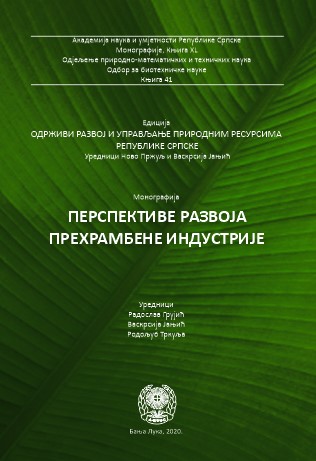Directions for the development of the meat processing industry in Republika Srpska
DOI:
https://doi.org/10.7251/EORU2002351GKeywords:
Meat processing industry, New technologies, DevelopmentAbstract
Meat is a food that has been consumed by humans throughout the history of its existence. Meat and meat products consumption will continue to grow over the coming decades, which requires additional efforts to increase raw meat production and develop technological procedures to extend the shelf life of finished products. Several new sources of protein are being explored, which may be an alternative to conventional meat production systems: raw materials of plant origin, raw materials of microbial origin, algae, rabbits, insects, molluscs, seafood, etc. In the coming decades, science is expected to produce results that will allow the commercial production of artificial meat. Meat of all kinds of animals which have myoblast cells in the skeletal muscle can be artificially produced. In this way, pork and chicken are most likely to be produced, but fish meat production is also possible. 3D printing technology has been used so far to produce several types of nutritional materials. However, there is still insufficient research on the possibility of printing fibrillar meat products (for example, pork, chicken, turkey or fish meat while there are no data for printing beef ). Further research is needed on the possibility of improving the rheological and physical properties of materials (raw materials) and optimizing the conditions for subsequent processing of printed products. Consumers require meat products of high nutritional and sensory quality, which will in no way jeopardize their health. There are more functional meat products on the market and further development of this type of products is expected. Manufacturers will continue to take measures to improve microbiological food safety and the development of technological processes that will prevent the formation of toxic and harmful substances, and prevent contamination of products with environmental chemicals. The application of new packaging materials (biopolymers and nanocomposites) and new meat and meat products packaging systems (active and smart packaging) will facilitate the implementation of plans for improving the safety of meat and meat products.
